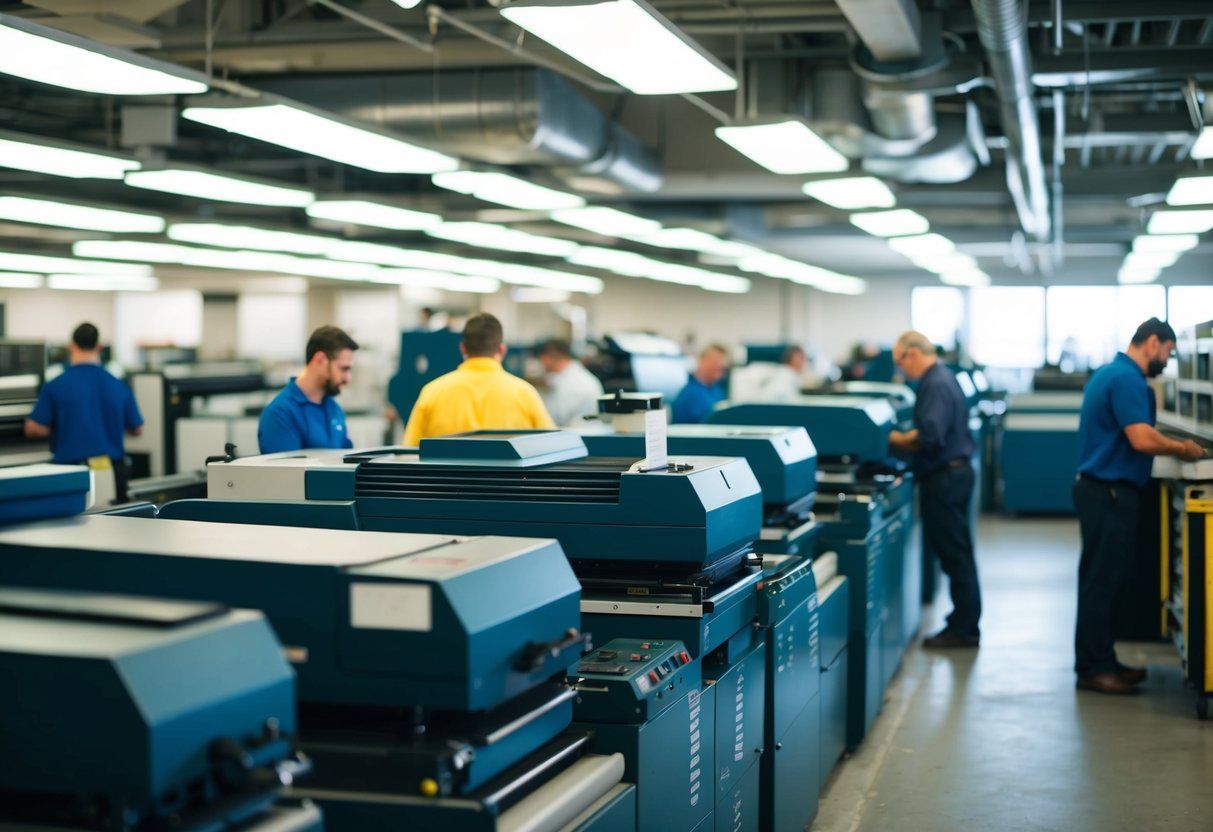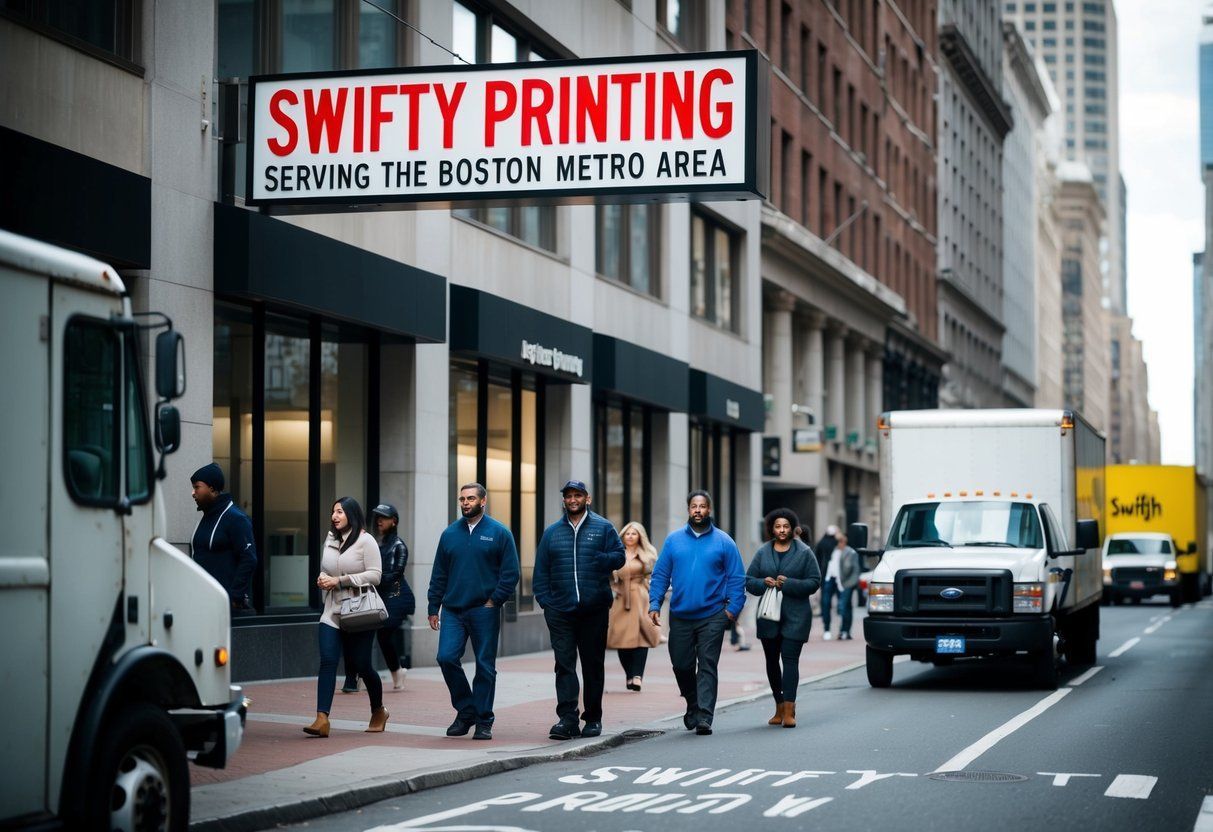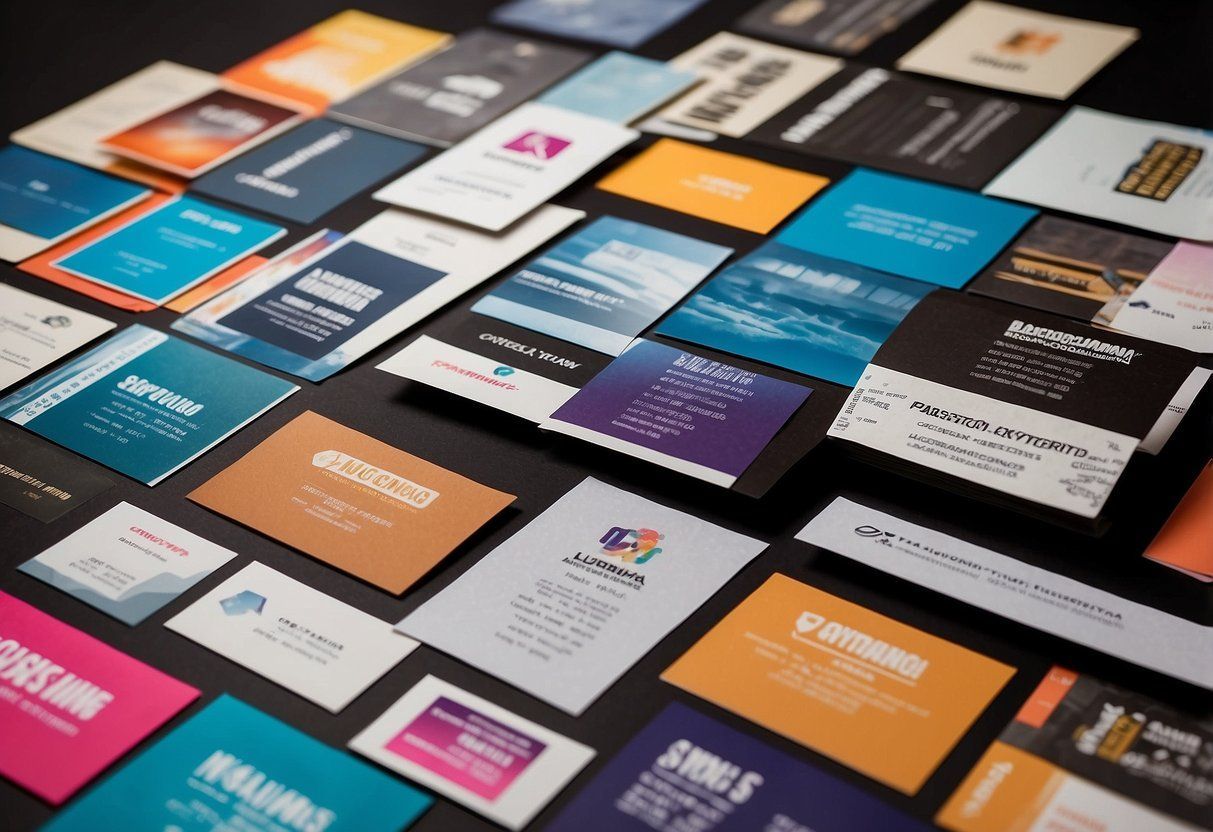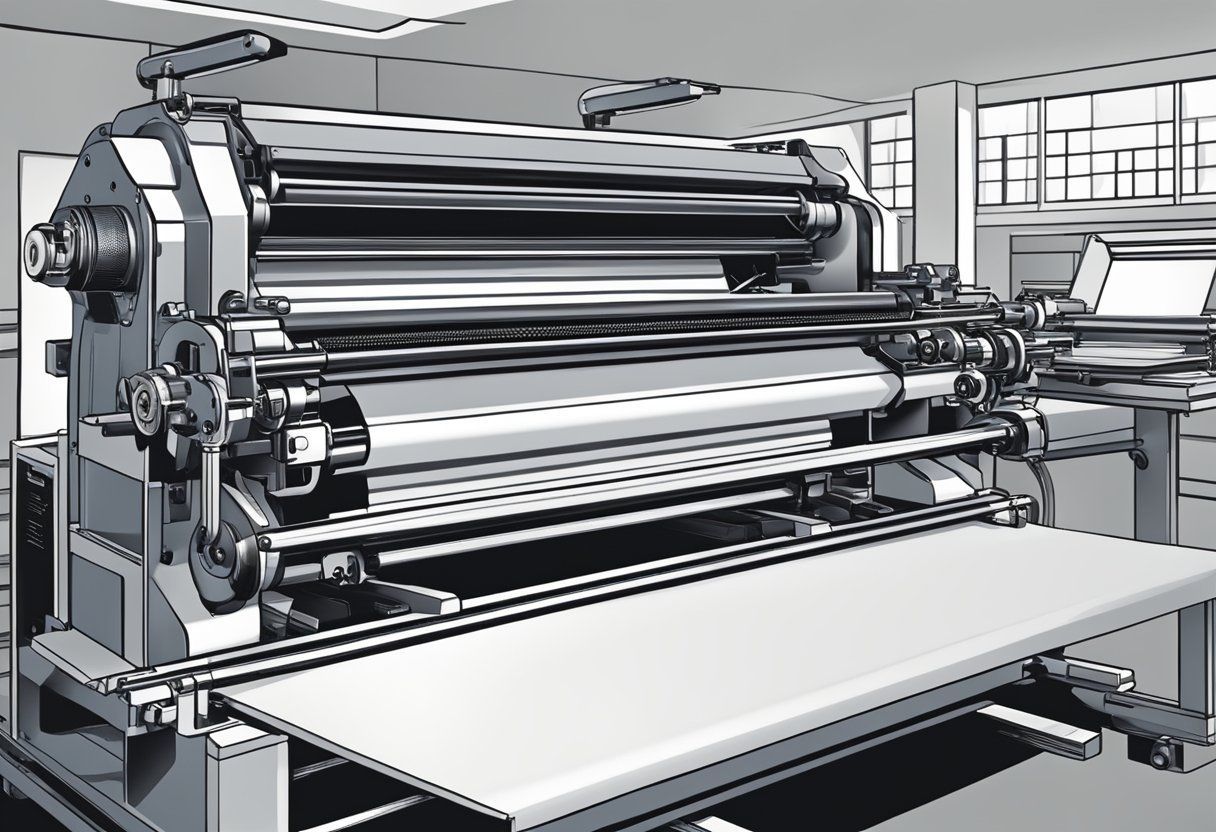Printed Products: An Overview of Postcards, Flyers, and More
Printed products like postcards, flyers , and brochures have been used for marketing purposes for decades. Despite the rise of digital marketing, print marketing remains a valuable tool for businesses to reach their target audience. Print marketing offers a tangible way to engage with potential customers and can be especially effective when used in conjunction with other marketing efforts.

Understanding print marketing is crucial for businesses looking to create effective marketing materials. Factors such as design, production, and materials used can all impact the success of a printed product. Additionally, businesses must consider the marketing goals they hope to achieve through their printed materials.
There are many types of printed products available, each with its own unique advantages and disadvantages. Postcards, for example, can be an effective way to reach a local audience, while brochures can provide more detailed information about a product or service. Understanding the different types of printed products available can help businesses choose the best option for their specific marketing needs.
Key Takeaways
- Print marketing remains a valuable tool for businesses to reach their target audience.
- Understanding the marketing goals and the types of printed products available is crucial for creating effective marketing materials.
- Postcards, flyers, and brochures are just a few of the many types of printed products available for businesses to use in their marketing efforts.
Understanding Print Marketing

Print marketing is a powerful tool that can help businesses grow and thrive in today’s digital world. While digital marketing has become increasingly popular, print marketing still plays an important role in a company’s marketing strategy. In this section, we will explore the role of print marketing, the advantages of printed marketing materials, and how businesses can create an effective print marketing strategy.
The Role of Print in a Digital World
Despite the rise of digital marketing, print marketing still has a significant impact on the market. Printed materials like postcards, flyers, and brochures can help businesses reach their target audience in a more personal and tangible way. Print marketing also helps to establish brand recognition and trust, which are essential for building a successful brand.
Print marketing can be particularly effective for small businesses that are looking to establish themselves in the market. By creating print collateral , businesses can create a physical representation of their brand that customers can hold in their hands. This can help to establish brand awareness and recognition, which can be difficult to achieve through digital marketing alone.
Advantages of Printed Marketing Materials
Printed marketing materials have several advantages over digital marketing. For one, printed materials are tangible and can be held in a customer’s hand. This can create a more personal connection between the customer and the brand. Printed materials also have a longer lifespan than digital ads, which can be easily ignored or forgotten.
Printed marketing materials can also be more effective in targeting specific demographics. For example, a company that sells products to an older demographic may find that print ads are more effective than digital ads. Printed materials can also be used to target specific geographic regions, which can be useful for businesses that have a local focus.
Print Marketing Strategy
To create an effective print marketing strategy, businesses should first identify their target audience. This will help them to create marketing materials that are tailored to the needs and preferences of their customers. Once a target audience has been identified, businesses can begin to create print collateral that speaks directly to that audience.
An effective print marketing strategy should also be integrated with a company’s overall marketing strategy. This can help to create a cohesive brand message that is consistent across all marketing channels. Businesses should also consider their budget when creating a print marketing strategy. Print marketing can be expensive, so it is important to create a strategy that is both effective and cost-efficient.
In conclusion, print marketing is an essential tool for businesses that want to establish brand recognition, trust, and awareness. By creating effective print collateral and integrating it with their overall marketing strategy, businesses can reach their target audience in a more personal and tangible way. With the right strategy, print marketing can help businesses grow and thrive in today’s digital world.
Designing Effective Print Materials

When it comes to designing effective print materials like postcards, flyers, and brochures, there are several key design elements that should be taken into consideration. These elements are crucial to ensure that the final product is visually appealing, engaging, and effective in conveying the intended message.
Key Design Elements for Print
Design is an essential aspect of creating effective print materials. The design should be eye-catching, visually appealing, and easy to read. The use of colors, images, and fonts should be carefully considered to ensure that they work together to create a cohesive and visually appealing design. The color palette should be chosen to reflect the brand’s identity, and the imagery should be chosen to engage the target audience.
Working with Graphic Designers
Working with a graphic designer can be an excellent way to ensure that the final product is of high quality. A graphic designer can help to create an eye-catching design that is visually appealing and effective in conveying the intended message. They can also provide valuable insights into the use of colors, images, and fonts, as well as the overall layout of the print materials.
Branding and Visual Identity
Branding and visual identity are essential elements of creating effective print materials. The logo, colors, and overall design should be consistent with the brand’s identity and should reflect the brand’s values and personality. This consistency will help to create a strong brand identity that is easily recognizable and memorable.
In conclusion, designing effective print materials requires careful consideration of several key design elements. By working with a graphic designer and ensuring that the design is consistent with the brand’s identity, businesses can create print materials that are visually appealing, engaging, and effective in conveying their intended message.
Types of Printed Products
Printed products come in a variety of forms, each with its own unique purpose. Here are some of the most common types of printed products:
Business Essentials
Business cards, letterhead, and envelopes are essential printed products for any business. They are used to convey contact information, establish branding, and make a professional impression. Business cards are typically small and portable, while letterhead and envelopes are larger and used for correspondence.
Folders and packaging are also important printed products for businesses. Folders are used to organize and present documents, while packaging is used to protect and display products. Both can be customized with branding and messaging to create a cohesive look and feel.
Marketing and Promotional Materials
Brochures, catalogs, and newsletters are commonly used for marketing and promotional purposes. Brochures are typically tri-folded and used to provide an overview of a company or product. Catalogs are larger and more comprehensive, showcasing a range of products or services. Newsletters are used to keep customers and stakeholders informed about a company’s activities and developments.
Posters, banners, and signage are also important marketing tools. Posters and banners are typically used to promote events or products, while signage is used to direct customers and visitors. All three can be customized with branding and messaging to attract attention and convey information.
Event-Specific and Seasonal Printables
Event-specific and seasonal printables are used to promote and celebrate specific occasions. Invitations, tickets, and programs are commonly used for events such as weddings, concerts, and conferences. Greeting cards, calendars, and gift tags are used to celebrate holidays and special occasions.
In conclusion, printed products are essential for businesses and individuals alike. They can be used for a variety of purposes, from conveying contact information to promoting products and services. By customizing printed products with branding and messaging, businesses and individuals can create a cohesive and professional image.
Print Production and Materials
When it comes to creating printed products like postcards, flyers, and brochures, there are several factors to consider to ensure the final product is of high quality. This section will cover the key elements involved in the print production process, including choosing the right paper and material, understanding printing techniques, and finishing touches and customization.
Choosing the Right Paper and Material
One of the most important decisions in print production is selecting the right paper and material for the job. The choice of paper can impact the overall quality of the final product, including its durability, texture, and appearance. There are many types of paper to choose from, including glossy, matte, and textured finishes, as well as recycled and eco-friendly options.
It’s also important to consider the weight of the paper, as heavier paper can lend a more professional and substantial feel to the final product. In addition, the type of material used can also impact the final product, with options including plastic, vinyl, and fabric.
Understanding Printing Techniques
Another key aspect of print production is understanding the various printing techniques available. Digital printing is a popular option, as it allows for quick turnaround times and high-quality results. Offset printing is another option, which involves transferring ink from a plate to a rubber blanket, then onto the printing surface.
It’s also important to consider the resolution of the final product, as this can impact the clarity and detail of the printed image. In addition, it’s important to ensure that the design includes a bleed, which extends the design elements beyond the edge of the final product to ensure that there are no white borders.
Finishing Touches and Customization
Finally, finishing touches and customization can add an extra level of professionalism and uniqueness to the final product. This can include options like embossing, foil stamping, and die-cutting, which can add texture and visual interest to the final product.
In addition, print advertising can be enhanced with the addition of QR codes, which allow customers to scan the code with their smartphone and be directed to a website or other online resource. Overall, by carefully considering the paper and material, printing technique, and finishing touches, businesses can ensure that their printed products are of the highest quality and make a lasting impression on their customers.
Marketing Considerations for Printed Products

Printed marketing materials like postcards and flyers are still an effective way to reach audiences, but businesses need to be strategic when creating and distributing them. Here are some marketing considerations to keep in mind when planning a print campaign.
Targeting Your Audience
Before creating any promotional materials, businesses need to identify their target audience. This includes demographics like age, gender, location, income, and interests. Once the target audience is identified, businesses can tailor their messaging and design to appeal to that group.
Budgeting for Print Marketing
Print marketing can be cost-effective, but it’s important to budget carefully. Businesses should consider the cost of design, printing, and distribution when creating a print campaign. They should also think about how many copies they need to print and how often they need to distribute them.
Measuring Effectiveness and ROI
Businesses need to track the effectiveness of their print campaigns to determine ROI. They can do this by tracking sales, website traffic, or other metrics that align with their business goals. It’s also important to ask customers how they heard about the business and to track the distribution of printed materials to determine which channels are most effective.
When creating printed marketing materials, businesses should keep in mind the benefits of tangible collateral and recognition. They should also consider the messaging, call to action, and distribution channels. By targeting the right audience, budgeting carefully, and measuring effectiveness, businesses can create successful print campaigns that support their overall marketing strategy.
Integrating Print with Other Marketing Efforts
Print marketing materials such as postcards, flyers, door hangers, and forms are still a versatile and effective way to reach consumers in the business market. However, combining print with digital marketing efforts can increase the chances of success.
Combining Print and Digital Marketing
Small businesses can leverage website builders and Google Business Profile to create a digital presence. QR codes can be added to printed marketing materials to drive traffic to the website or social media pages. This integration can help businesses reach a wider audience and track the effectiveness of their marketing campaigns.
Cross-Media Marketing Campaigns
Cross-media marketing campaigns combine different marketing channels such as print, email, social media, and mobile marketing. By leveraging the strengths of each channel, businesses can create a seamless customer experience. For example, a business can send a direct mail piece with a QR code that leads to a landing page with a sign-up form for an email newsletter.
Leveraging Print in Social Media
Print marketing materials can be used to promote social media pages and vice versa. For example, a business can include their social media handles on their printed materials and encourage customers to follow them for updates and promotions. Additionally, printed materials can be used to create a press kit that can be shared on social media to increase brand awareness.
In conclusion, integrating print with other marketing efforts can help businesses reach a wider audience and increase the effectiveness of their campaigns. By leveraging the strengths of each channel, businesses can create a seamless customer experience and track the effectiveness of their marketing efforts.
Practical Tips for Print Marketing

Print marketing is an effective way to reach a wide audience and promote a brand. There are various printed products available for marketing, such as postcards, flyers, and brochures. In this section, we will discuss some practical tips for print marketing that can help businesses to create effective campaigns.
Maintaining Brand Consistency
Maintaining brand consistency is essential for any business. It helps to create a strong brand identity and increases brand recognition. When creating print marketing materials, it is important to ensure that they are consistent with the brand’s visual identity. This includes using the same colors, fonts, and logos across all marketing materials.
Creative Ideas for Print Marketing
Print marketing offers a lot of creative opportunities for businesses to promote their brand. Some creative ideas for print marketing include:
- Using eye-catching images and graphics to grab the reader’s attention.
- Incorporating humor or clever wordplay to make the marketing materials more memorable.
- Offering discounts or promotions to encourage customers to take action.
- Creating unique shapes or sizes for the marketing materials to stand out from the competition.
Networking and Distribution Strategies
Networking and distribution strategies are important for getting print marketing materials into the hands of potential customers. Some effective strategies include:
- Partnering with other businesses to distribute marketing materials.
- Attending trade shows or events to network and distribute materials.
- Using direct mail to reach a targeted audience.
- Displaying marketing materials in high-traffic areas such as cafes, libraries, and community centers.
By following these practical tips, businesses can create effective print marketing campaigns that help to promote their brand and reach a wider audience.
Frequently Asked Questions

What are the common products produced by a printing press?
Printing presses can produce a wide range of printed products, including brochures, flyers, postcards, business cards, banners, posters, and catalogs. These products can be customized to meet specific needs and can be printed in different sizes, colors, and quantities.
Which printed materials are most effective for marketing purposes?
The effectiveness of printed materials for marketing purposes depends on the target audience and the intended message. Postcards and flyers are popular choices for direct mail campaigns, while brochures and catalogs are more suitable for providing detailed information about products and services. Banners and posters are effective for promoting events and sales.
How do postcards differ from flyers in print advertising?
Postcards are smaller in size and are typically used for direct mail campaigns. They are designed to be eye-catching and convey a message quickly. Flyers, on the other hand, are larger in size and can contain more detailed information. They are often used to promote events or sales.
What are examples of print media used in advertising?
Print media used in advertising includes newspapers, magazines, brochures, flyers, postcards, billboards, and posters. These media can be used to reach a wide audience and convey a message effectively.
Can you list the various types of print advertising methods?
There are several types of print advertising methods, including direct mail campaigns, newspaper and magazine ads, brochures and catalogs, billboards and posters, and promotional items such as business cards and postcards.
Why is print advertising still important in the digital age?
While digital marketing has become increasingly popular, print advertising still has a place in the marketing mix. Print materials can be more tangible and memorable than digital ads, and they can reach audiences that may not be active online. Additionally, print advertising can help establish brand credibility and authority.…










